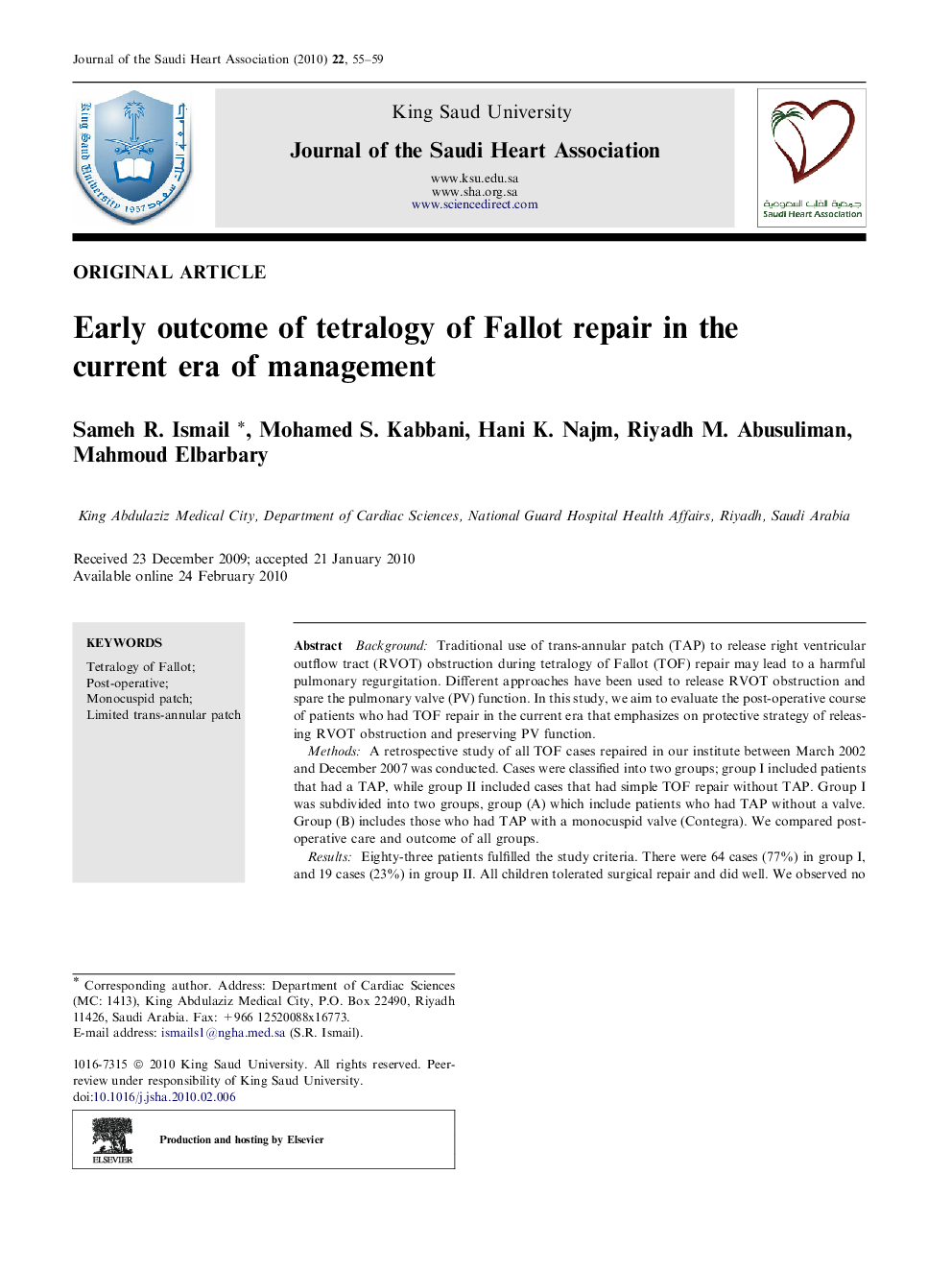| Article ID | Journal | Published Year | Pages | File Type |
|---|---|---|---|---|
| 2978204 | Journal of the Saudi Heart Association | 2010 | 5 Pages |
BackgroundTraditional use of trans-annular patch (TAP) to release right ventricular outflow tract (RVOT) obstruction during tetralogy of Fallot (TOF) repair may lead to a harmful pulmonary regurgitation. Different approaches have been used to release RVOT obstruction and spare the pulmonary valve (PV) function. In this study, we aim to evaluate the post-operative course of patients who had TOF repair in the current era that emphasizes on protective strategy of releasing RVOT obstruction and preserving PV function.MethodsA retrospective study of all TOF cases repaired in our institute between March 2002 and December 2007 was conducted. Cases were classified into two groups; group I included patients that had a TAP, while group II included cases that had simple TOF repair without TAP. Group I was subdivided into two groups, group (A) which include patients who had TAP without a valve. Group (B) includes those who had TAP with a monocuspid valve (Contegra). We compared post-operative care and outcome of all groups.ResultsEighty-three patients fulfilled the study criteria. There were 64 cases (77%) in group I, and 19 cases (23%) in group II. All children tolerated surgical repair and did well. We observed no statistically significant difference in the post-operative ICU care, complications rates and morbidity between all groups. There was no surgical mortality in all groups.ConclusionChildren undergoing TOF repair had excellent short-term outcome with the current protective strategy aiming to spare valvular function, and conserving myocardial function. Applying a monocuspid patch technique did not show clear short-term benefits. Long term follow up is needed to evaluate future difference in different techniques.
